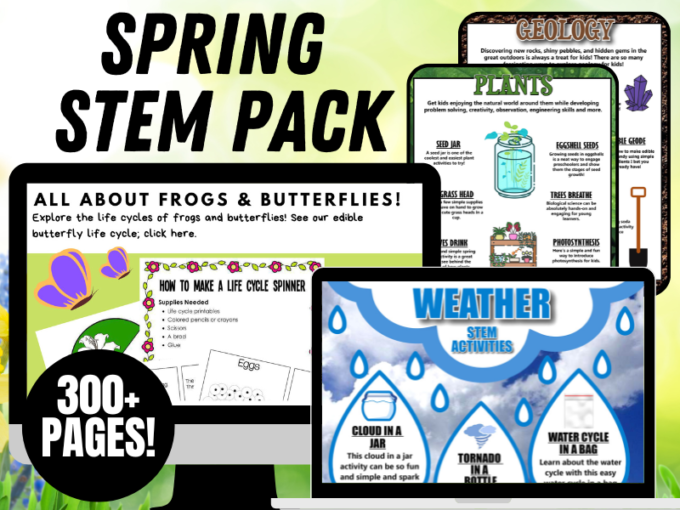A rain gauge is an instrument that measures the amount of rain that falls in an area over a period of time. Find out how to make your own DIY rain gauge at home or in the classroom. Take it outdoors to measure the amount of rainfall in your local area. All you need are a few simple supplies to get started! We love fun, and hands-on weather science for kids!
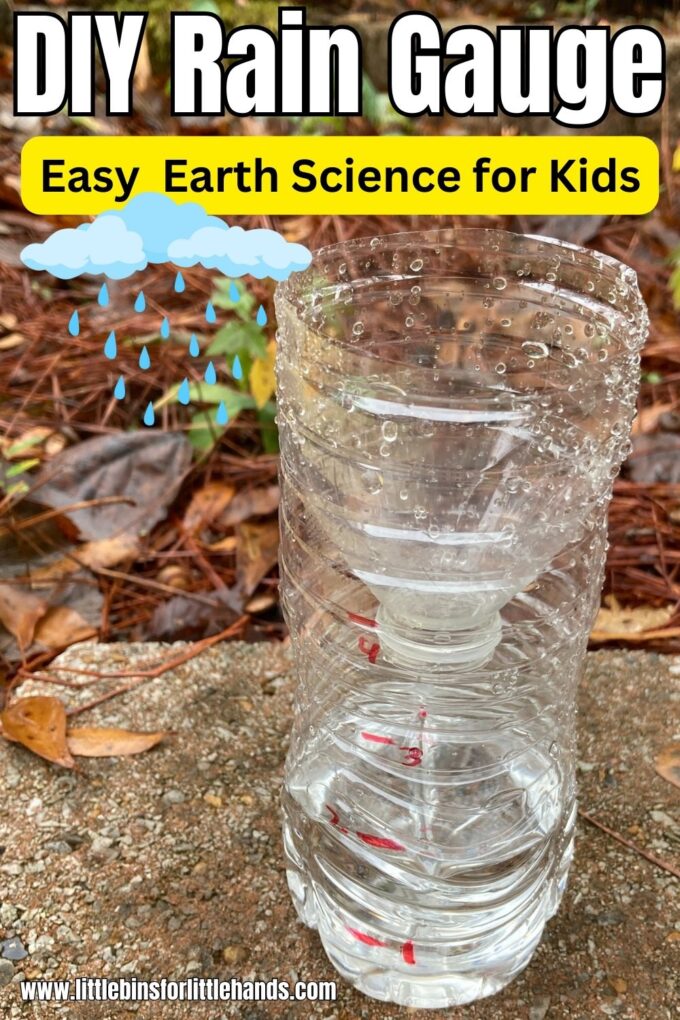
Make A Rain Gauge For Weather Science
Get ready to add this fun weather science activity, to your lesson plans this season. Our weather science activities are designed with you, the parent or teacher, in mind!
Easy to set up, quick to do, most activities will take only 15 to 30 minutes to complete and are heaps of fun! Plus, our supplies lists usually contain only free or cheap materials you can source from home!
Making a simple rain gauge provides a hands-on learning experience. Kids get to actively participate in constructing a simple weather instrument and learn about scientific concepts such as measurement, observation, and data collection.
By engaging in the process of making and using a rain gauge, kids develop a range of skills, from scientific and mathematical to observational and critical thinking. It’s an activity that combines education with hands-on exploration of the natural world.
Let’s find out how to make a rain gauge, how they work and what they are used for! While you’re at it, make sure to check out these other fun earth science activities.
How Does A Rain Gauge Work?
A rain gauge is like a special cup that helps us measure how much rain falls from the sky. When it rains, the water goes into the cup, and we can see how deep it gets. The numbers on the side of the cup show us how much rain there was. It’s like keeping score of how much water comes from the clouds!
Putting the rain gauge in the right spot and making sure it’s not too windy helps us get the right numbers. By using these cups, scientists and weather experts learn about rain and how much falls in different places, which helps them understand the weather better.
What Is A Rain Gauge Used For?
The main purpose of a rain gauge is to monitor and measure the amount of rainfall that occurs in a specific area. This information helps meteorologists and climatologists understand local rainfall patterns.
Rain gauge measurements are important for climate research. By studying long-term rainfall patterns, scientists can understand how weather is changing over long periods of time.
In areas where water is a valuable resource, rain gauges play a vital role in looking after that water. Rainfall measurements help people know how much water is available, plan for droughts or floods, and make decisions about water usage.
Farmers use rain gauges to track rainfall on their fields. This information helps the farmer decide how often crops need watering.
Tips For Using Your Rain Gauge
Choose a Suitable Location
Place the rain gauge in an open area where it can easily collect rain without obstructions like buildings or trees. This ensures accurate measurements and a clear view of the sky. Consider a spot easily accessible to kids for regular observations.
Use Clear Measurement Units
Ensure the rain gauge has clear measurement units that are easy for kids to understand. You can use simple markings or labels in inches or centimeters. Reinforce basic measurement concepts by discussing and comparing the recorded rainfall amounts.
Regularly Check and Empty
Encourage kids to check the rain gauge regularly, especially after rainfall events. Emphasize the importance of emptying the rain gauge before a new rain event to ensure accurate measurements for each occurrence.
Record and Analyze Data
Create a simple chart or journal to record the measurements. This adds an extra layer of learning, allowing kids to visualize patterns and changes in rainfall over time. Engage them in discussions about the data, encouraging observations and questions about weather patterns in their local area.
Incorporate Other Weather Activities
Integrate this activity into a broader exploration of weather. Discuss the water cycle, observe cloud formations, and connect the measured rainfall to changes in the environment. Encourage kids to predict and discuss how different weather conditions might affect the readings.
Free Earth Science Project Guide
This free Earth Science Guide includes clickable links to help get you started (download first to activate), a journal page, and the science process! For complete instructions and more, see our Science Project Pack.
How To Make A Rain Gauge
Supplies:
- Water bottle
- Marker
- Ruler
- Scissors
Instructions:
STEP 1: Cut the top off of a plastic water bottle.
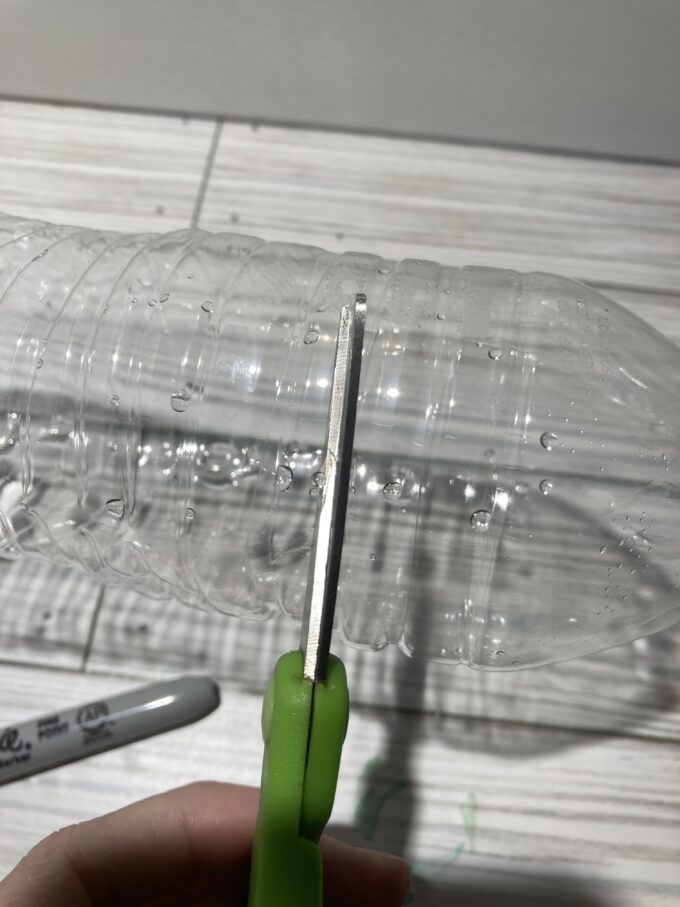
STEP 2: Invert it and place it inside the other half.
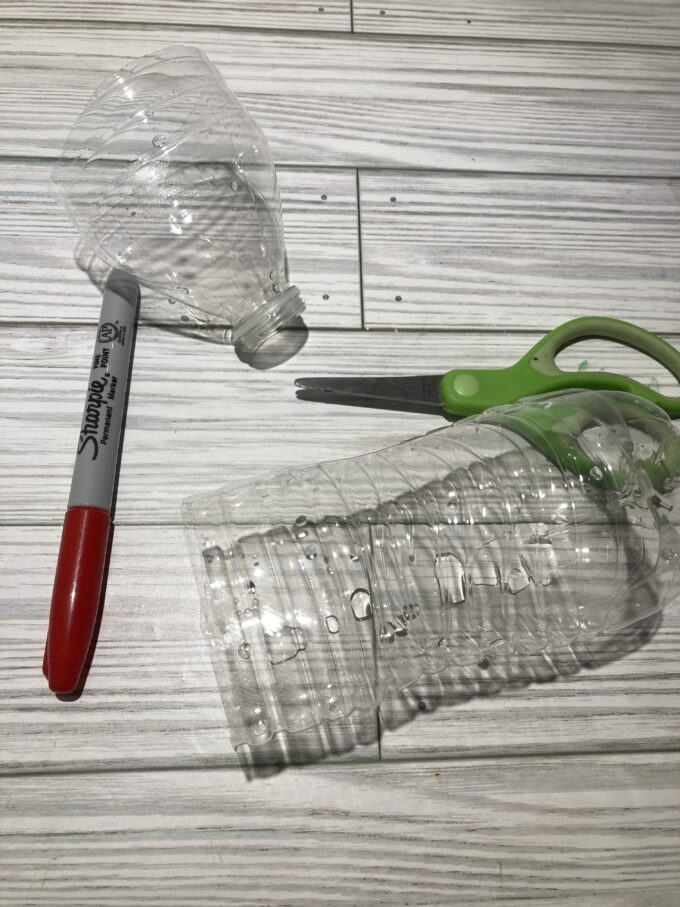
STEP 3: Now, use a ruler to measure inches and mark on the outside of the bottle.
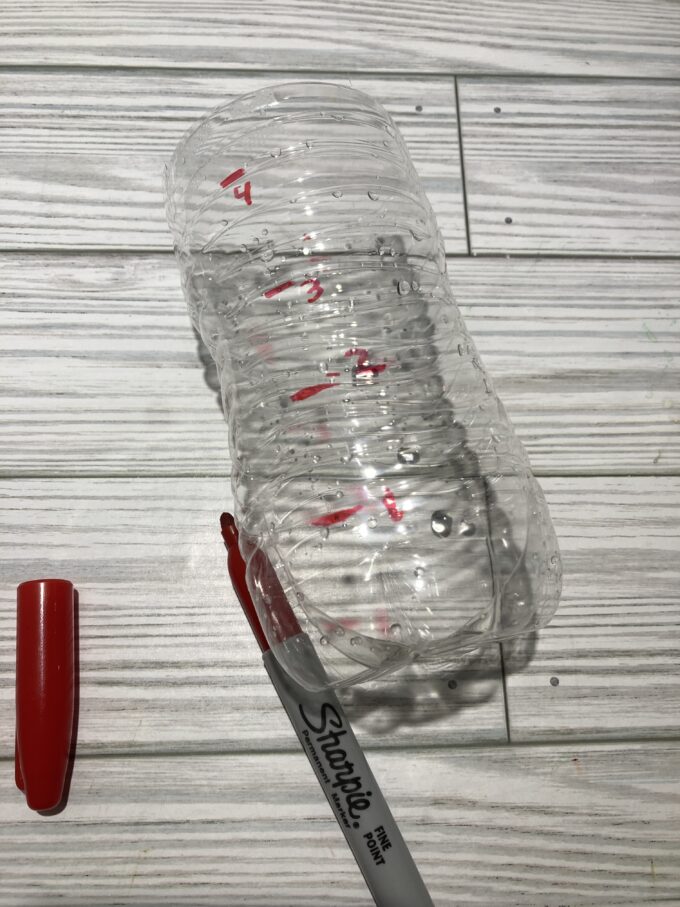
STEP 4: Optional: Get kids to decorate and personalize their rain gauge with colors, drawings, or weather-related themes. Make sure to keep the numbers visible for taking measurements.
STEP 5. Place the top part of the bottle facing downwards into the bottom of the bottle. This becomes the funnel for the rain gauge.
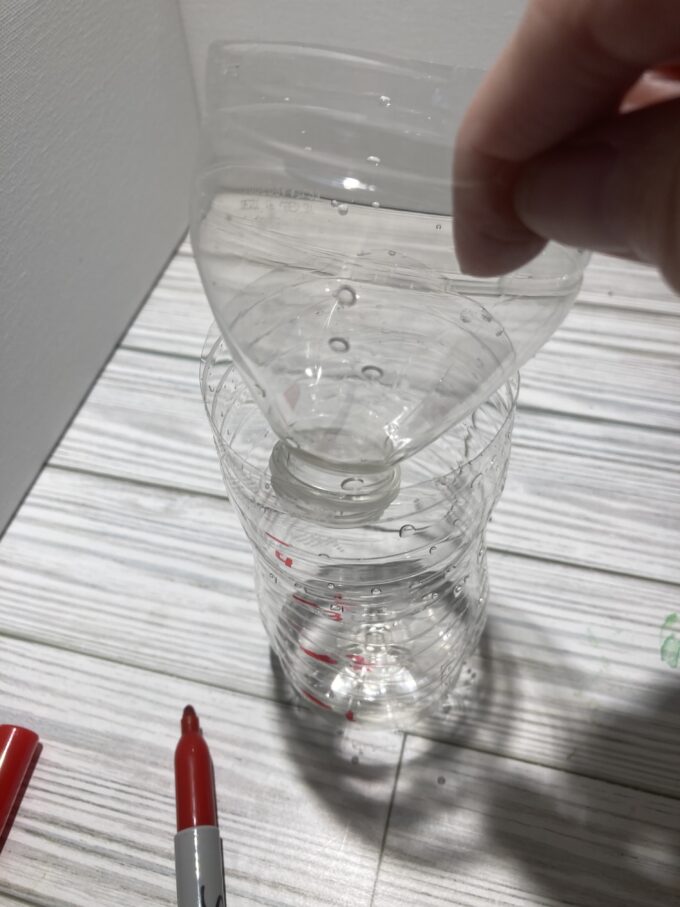
STEP 6: Place outside and wait! Record your observations.
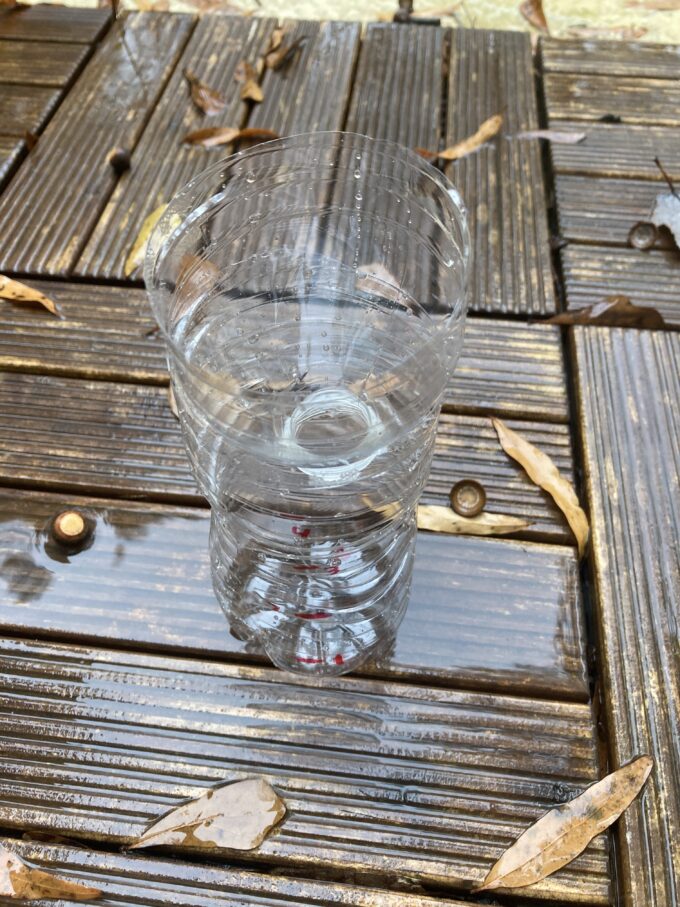
More Fun Weather Activities For Kids
When kids finish making their rain gauge, explore more weather science with one of these ideas below. You can find all our weather activities here!
Learn how a tornado forms with a simple tornado in a bottle.
Make a wind vane or a DIY anemometer to measure the direction of wind.
Explore where rain comes from.
Build a windmill from paper cups and straws.
Identify the layers of the atmosphere with these printable worksheets.
Set up a water cycle in a bottle or a water cycle in a bag for weather science.
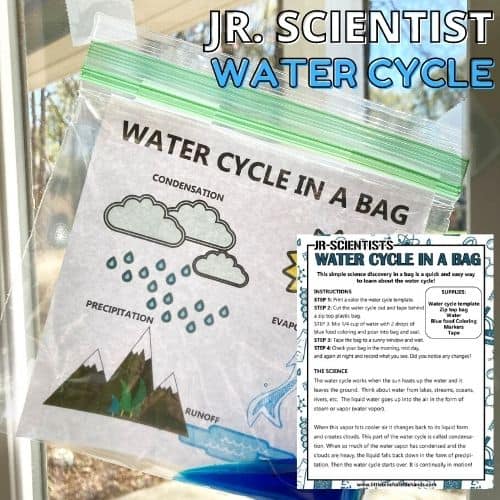
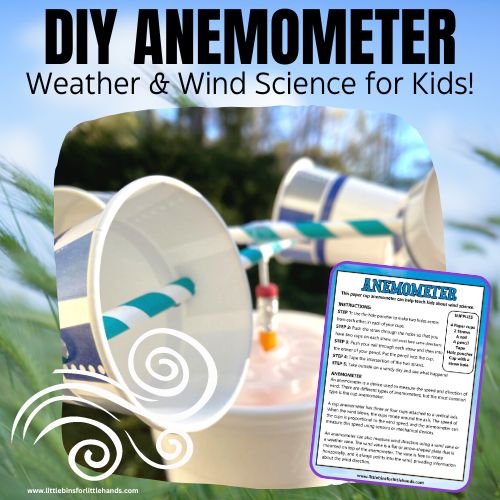

Printable Weather Activities Pack
If you want to have all your printable activities in one convenient place, plus exclusive worksheets with a spring theme, our 300+ page Spring STEM Project Pack is what you need!
Weather, geology, plants, life cycles, and more!



